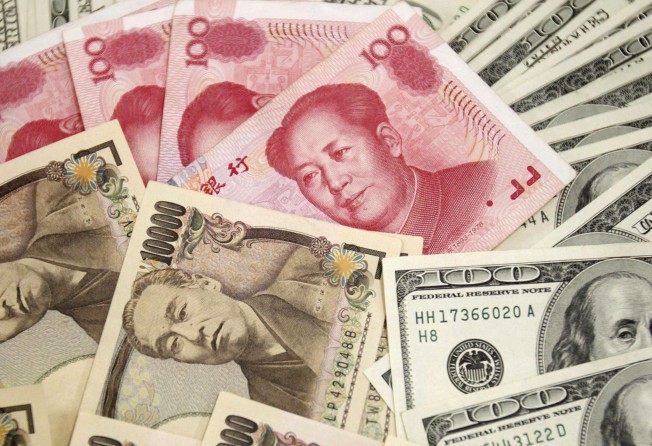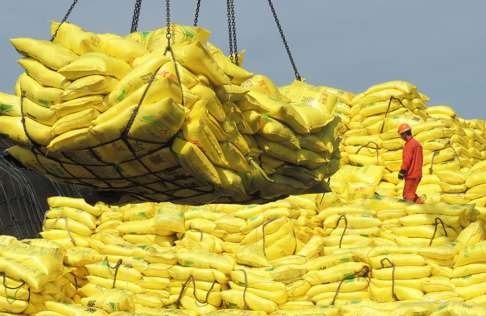With world trade in the doldrums, the threat of a new currency war looms
The complex nature of today’s globalised supply chains heightens the advantages of currency weakness

If strong international trade reflects a healthy global economy, then the world is looking a little peaky.
Global trade is growing less fast and as countries look to their own self-interest the temptation might be to opt for a weaker currency to shore up their competitive position. New currency wars could begin.
Even the United States could choose to become a participant.
Signs of a backlash against globalisation in some parts of the world are already evident.
As those sentiments are co-opted by politicians, that will affect attitudes to currencies and impede global free trade.
US Presidential candidate Donald Trump has already exhibited scepticism about the benefits accruing from a strong dollar, stating a year ago that “it sounds good to say ‘we have a strong dollar.’ But that’s about where it stops”.
Yale University’s Stephen Roach wrote about some of these issues in a Project Syndicate piece on July 25.
Recent trends in global trade are “flashing warning signs. According to the International Monetary Fund, annual growth in the volume of world trade has averaged just 3 per cent over the 2009-2016 period – half the 6 per cent rate from 1980 to 2008”, the former chairman of Morgan Stanley Asia wrote.
“This reflects not only the Great Recession, but also an unusually anaemic recovery.
“With world trade shifting to a decidedly lower trajectory, political resistance to globalisation has only intensified,” Roach added.
But leaving aside political arguments against globalisation, it is trends in trade data that may well elicit a more immediate response from policymakers around the world, as a glance at recent data illustrates.
In Hong Kong, including the latest available figure for June, total exports have fallen for 14 straight months.
As for the mainland, compared with the same month in 2015, July saw both imports into China down 12.5 per cent and China’s exports falling 4.4 per cent said the General Administration of Customs on 8 August.
China’s imports have now fallen for 21 months in succession, while exports have declined in 12 of the last 13 months.
Across the Pacific, “container volume at the [Californian] Port of Long Beach was down 7.7 per cent in July compared to the same month in 2015,” the port authorities disclosed on 12 August.
Meanwhile in Japan, data released last Thursday showed the country’s imports and exports down 24.7 per cent and 14 per cent respectively in July year on year, their largest monthly drops since October 2009.
Given that the dollar/yen exchange rate was above 120 in July 2015 compared to a level much closer to 100 last month, it would be easy for policymakers in Tokyo to argue that the rise in the yen’s value in the intervening 12 months has had a negative impact on Japan’s exports and that a weaker yen might help.
Japan’s problem, however, is that the currency market seems to have taken the view that Bank of Japan monetary policy, of which yen weakness was a side effect, has reached the limits of its effectiveness.
That doesn’t mean Japan might not seek a weaker yen but it could mean the currency market might not play ball.

That said, if the yen edges stronger and the yuan stays stable, the move up in the yen/yuan exchange rate would work in the interests of Chinese exporters.
As for the United States, politics aside, US policy makers might themselves favour a lower dollar.
When New York Federal Reserve chief William Dudley spoke in Bali on 31 July he noted that if the dollar were to rise “reflecting expectations of lower interest rates abroad relative to US interest rates” then the Fed might have to adjust its own monetary policy path lest it contribute to what would otherwise be an undesired tightening of US financial conditions.
So if the dollar were weaker, surely the Fed might feel it has more room to hike. A lower dollar at this juncture might actually suit the US central bank.
That might also suit Hong Kong’s exporters, given that the Currency Board arrangement would, by definition, see any broad-based US dollar weakness lead to a fall in the Hong Kong dollar’s value versus currencies other than the greenback itself.
International trade data suggests all is not well with the global economy. Some countries might think local currency weakness a useful tool to shore up market share. New currency wars could break out.